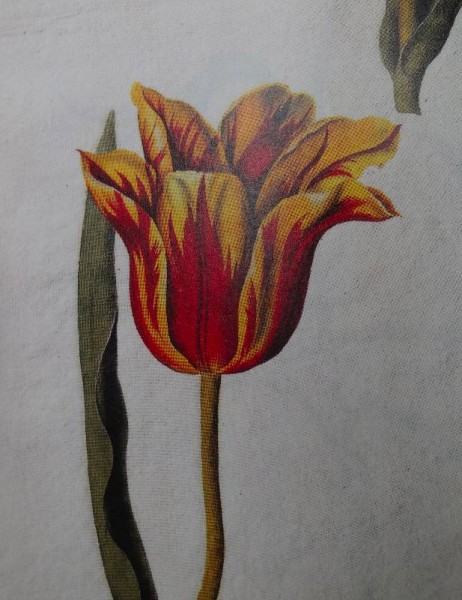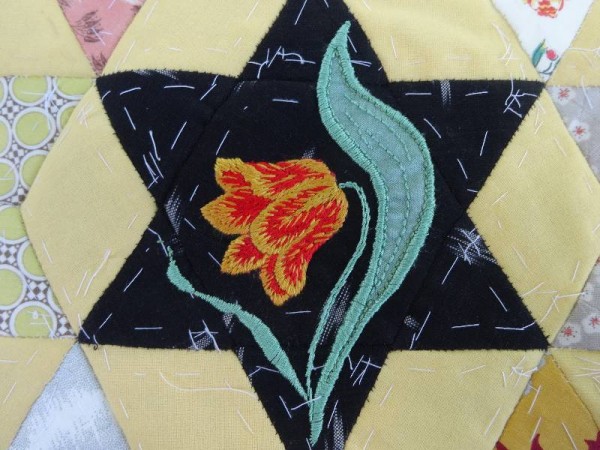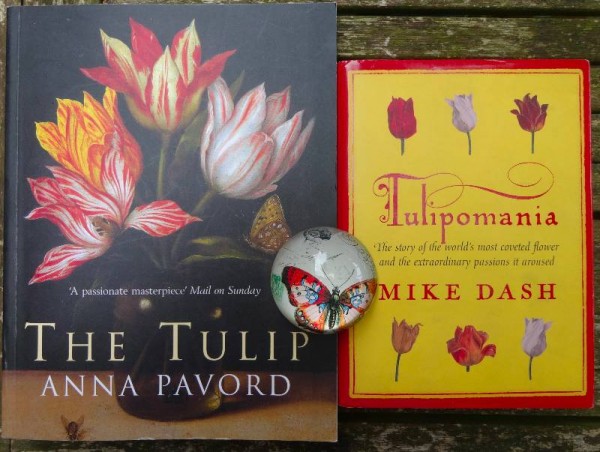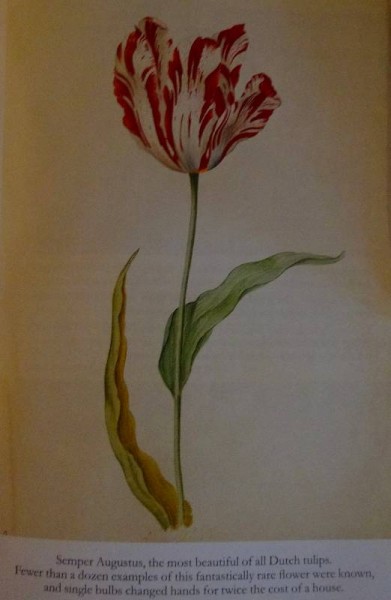Tulipomania was one of those bizarre feasts of crazy financial speculation that we love to refer back to when some sector of the economy, like house prices (especially London ones), starts to overheat and sets off upward. There is no more colourful example of the working of unfettered market forces by which fortunes were made (and lost) overnight than that of the tulip market in the Netherlands in the first half of the C17th. So sophisticated was the market in tulips that an early sort of ‘futures’ market evolved in which bulbs were traded but never actually changed hands – the only certain beneficiaries of this being innkeepers, because most trading took place in inns and taverns and ‘wine money’ became an important part of the deal.
The source of all this hooha was a flower brought to Europe by travellers from Turkey, along with silks, spices and tales of the silk route It was the beloved flower of sultans for whom tulip motifs decorated everything – textiles, pottery, manuscripts, painted walls, glazed floors, carved wooden screens – a reminder of a flower only briefly in full bloom in their gardens.
But the plant had an additional and ultimately fatal fascination – that of unpredictability. What one year was a plain single-coloured flower could emerge the next year as a thing of surpassing beauty, with feathering and flames of a new colour bleeding into the original colour. These changeling ‘broken’ flowers were highly prized and many unsuccessful efforts were made to produce them at will. (Out of a batch of 100 tulips, probably one 1 or 2 of the sought after broken tulips would emerge.) Seemingly fortunate for speculators, when a bulb had ‘broken’, it remained broken and offsets maintained the sought after characteristics. Gradually, however, subsequent generations were observed to be slower to flower, less prolific and the blooms less splendid, stunted and weak, until in the end bulbs just broke up or withered away.
What the C17th did not know – could not know – was that the ‘breaks’ in their splendid tulips were caused by a virus spread by an aphid. The tulip break virus or tulip mosaic virus suppresses the laid-on colour of the tulip, its anthocyanin, and this allows the underlying colour (always either white or yellow) to emerge.
It wasn’t until 1928, that Dorothy Cayley, at the John Innes Horticultural Institution (not just ‘compost’ then) discovered that the disease was transferred via sap transmitted from plant to plant by aphids. In the 1960s it was shown to be a virus. Since then many countries have prohibited commerce in bulbs known to carry the virus. Today, tulips which look like the flamboyant C17 examples are stable variants and the result of careful breeding. In the C17th there were only a handful of species, today there are 6,000 different ones. Many involved in the bulb industry view the elimination of the mosaic virus on a par with the human elimination of smallpox. But, unlike the smallpox virus which is only kept in very small quantities in secure laboratories, some growers still have access to the tulip virus and produce broken tulips – this year at the Chelsea Flower Show, 2 broken tulips, Columbine and Sam Barlow were on display. Look here on Remodelista for a comparison of a broken tulip with one bred to achieve a similar effect.
Obviously, my tulip is meant to be one of the modern bred varieties and is fully virus free.
Bibliography:
Anna Pavord: The Tulip (Bloomsbury, 1999) A wide ranging book about a single flower and the political, social, economic, religious, intellectual and cultural baggage carried on its slender stem. Great pictures and beautifully written.
Mike Dash: Tulipomania (Victor Gollancz, 1999) The charting of what was perhaps the world’s strangest financial crisis, an attempt to cast a clear eye on the craze and to understand the financial climate in which it occurred.
Mr Marshal’s Flower Book (Royal Collections Publications, 2008)
The exquisite Florilegium of Alexander Marshal (c.1620-82) is the only surviving example of a C17th English flower book. His watercolour sketches of flowers make this a wonderful handbook for the embroiderer.







4 Comments
Such an interesting post Mary, and those tulips are all gorgeous. Your link to Remodelista used an image from another of my favourite blogs; Ben Pentrath’s ‘Inspiration’ where he gardens beautifully in Dorset.
Once on the blog, my tulip looked so inadequate compared to the beautiful ones photographed from books, that I unpicked a couple of petals and re-did them. I’m glad you found the post interesting. I too enjoy Ben Pentreath’s blog.
Beautiful beautiful tulips. Such an interesting post and your embroidery is lovely. In my garden as usual I forgot to plant the tulips. Every year I find it hard to think about the springtime tulips when its so hot, and I mean hot, 34oC and over! This year has been no different so no tulips are popping up over here….
I’m not good at thinking ahead with bulbs – a couple of patches of tulips come up in the vicarage garden every year and it’s at that point that I wish I’d got my act together in October/November and planted a few more. Goodness knows how you get motivated to do it in the sort of temperatures you mention, Lydia. Fortunately I can admire the ones planted by the college gardeners beneath the library windows. One day…